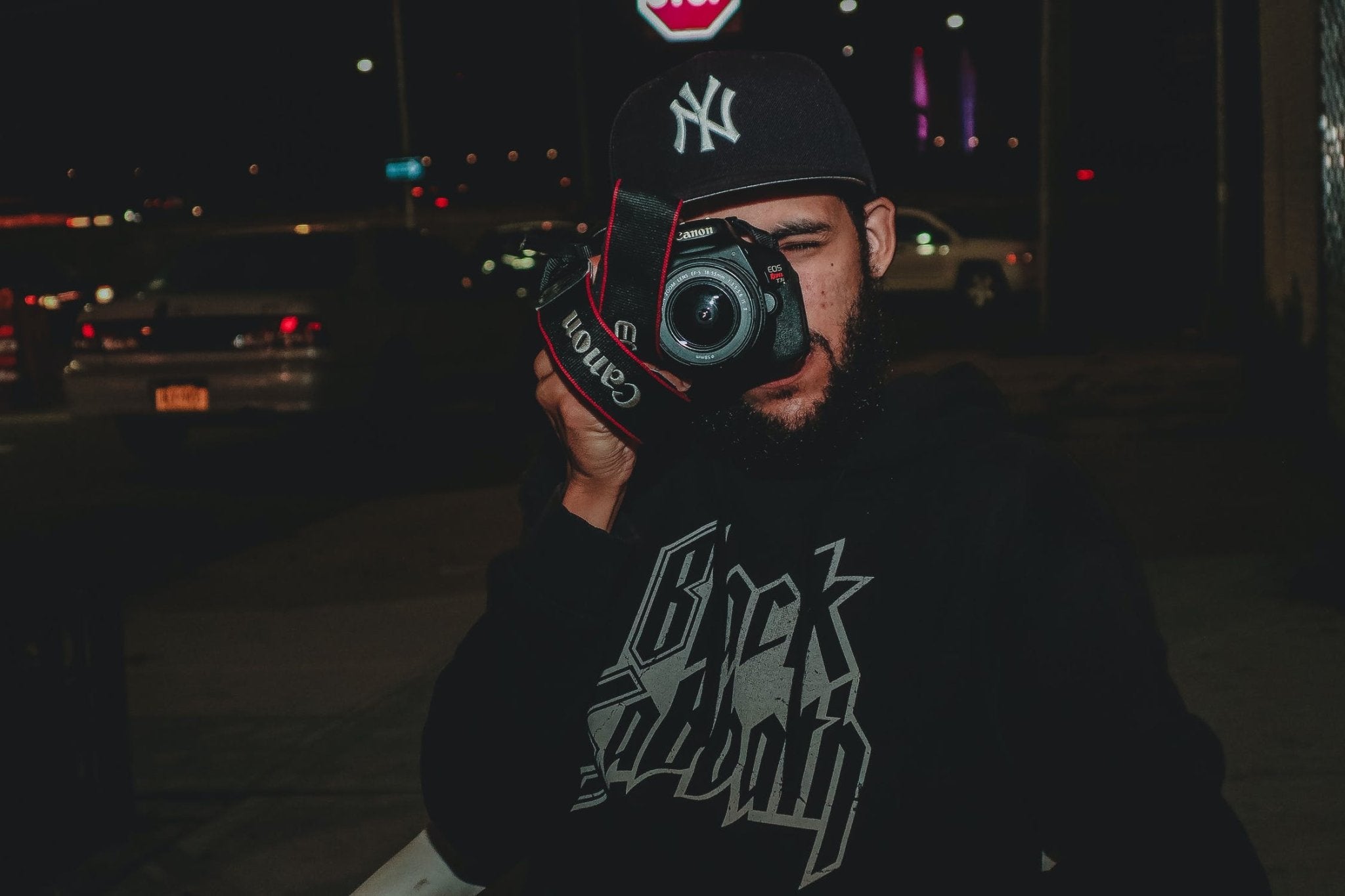When shooting street photographs, being ready with your camera might be a difficult challenge when there are so many moving elements in the frame. In this article, we'll show you which camera settings for street photography are critical first steps toward obtaining your desired shots. You'll discover how to set up your camera, so you're ready to pounce when that beautiful moment presents itself.
For most shooting situations, the best settings for street photography are:
Shutter speed: 1/125sec or faster
Aperture: f/5.6
ISO: 400
White Balance: Auto or Daylight
Focal Length: 18mm to 200mm
Exposure mode: Program AE
AF: Continuous focus
Program Mode
As a street photographer, your best asset is undoubtedly your speed. You must be ready to capture those crucial moments as they occur. The last thing you want to do is fuss with your camera settings.
In Program mode, you may use the exposure compensation dial or the +/– buttons on your camera's top plate to edit images later. The Program exposure mode will provide you with the most outstanding possible balance of shutter speed and aperture, allowing you to modify the suggested settings if required.
The Program mode, as the name implies, is for you to disable controls and let your camera choose what it believes are the optimum shutter speed and aperture settings for your shot.
However, at any moment, you may reject these suggestions if it doesn't look right. This implies you can concentrate on composing your shot and waiting for the ideal moment while your camera does the math.
Auto Focus Mode
Unless you're shooting one of those living statues, you'll discover that few street photography themes are static. This implies that before you get it right, you'll need to refocus and recompose subjects and situations a couple of times.
This is when your camera's continuous focusing mode comes in handy. When you half-press the shutter button while using C-AF, or continuous autofocus, your camera will refocus every time. This allows you to photograph moving objects a lot more quickly and efficiently.
Some cameras also have a multi-point AF option, saving you time.
Shutter Speed
When shooting street photography, most of the time, you'll want to stop any movement in your shot. To do this, set a shutter speed of at least 1/125 second. For most eventualities, using the old adage that your shutter speed should equal your focal length (e.g., a 1/60sec shutter at 60mm) gives you a chance of getting it right more often than not.
Aperture
When it comes to portrait photography, most people use large apertures – f numbers of 2.8 or lower – to produce a shallow depth of field – or small zone of sharpness - around their subject, focusing attention on them.
However, street photography is a little different. While you're mostly shooting individuals and emphasizing them, you also want to include some of the surrounding environment. In other words, you want to tell a narrative. And if your backdrop is unclear, you will be unable to do so.
I find that an f/5.6 aperture softens your background enough to allow signs, shapes, and other elements to be recognized while still being gentle enough to draw the viewer's attention toward your subject. It's just a starting point; you may refine it from there. Remember that every condition is unique.
ISO
You'll need a faster shutter speed than 1/125s to avoid camera shake when shooting in low light or at night. Because it isn't always feasible to achieve this 1/125sec shutter speed, it's usually best to bump up your sensitivity a bit in these situations.
You've probably heard that you should always aim for lower sensitivities, even at the expense of picture quality. On the other hand, modern cameras are a lot better at keeping noise under control than they were just a few years ago.
If you're having trouble achieving a shutter speed that allows you to shoot handheld without camera shake, boost your ISO up to 400 or even 800. These days, most cameras can produce acceptable, if not exceptional, photos at ISO 800, even those with smaller sensors.
However, it's usually better to stay inside your camera's ISO range in most instances. Modern cameras include an upper expansion range that allows you to expand your ISO even higher, sometimes to ridiculous million-plus sensitivities! While exciting, your images won't be usable at those crazy ranges.
White Balance
White balance, like ISO, has improved significantly over time. I almost always use my Auto White Balance option because it accurately determines the conditions and generates correct tones. So for street stuff, Auto should do the trick most of the time.
Other than that, develop your eye. Search the world for exciting things and capture them. There's never a shortage of beauty and mystery on the streets of your city.
Related article: Street Photography - How to Become a Street Photographer (5 Steps)
Related article: How to Get Into Photography
Related article: Camera Settings Guide – Best Camera Settings in Photography












